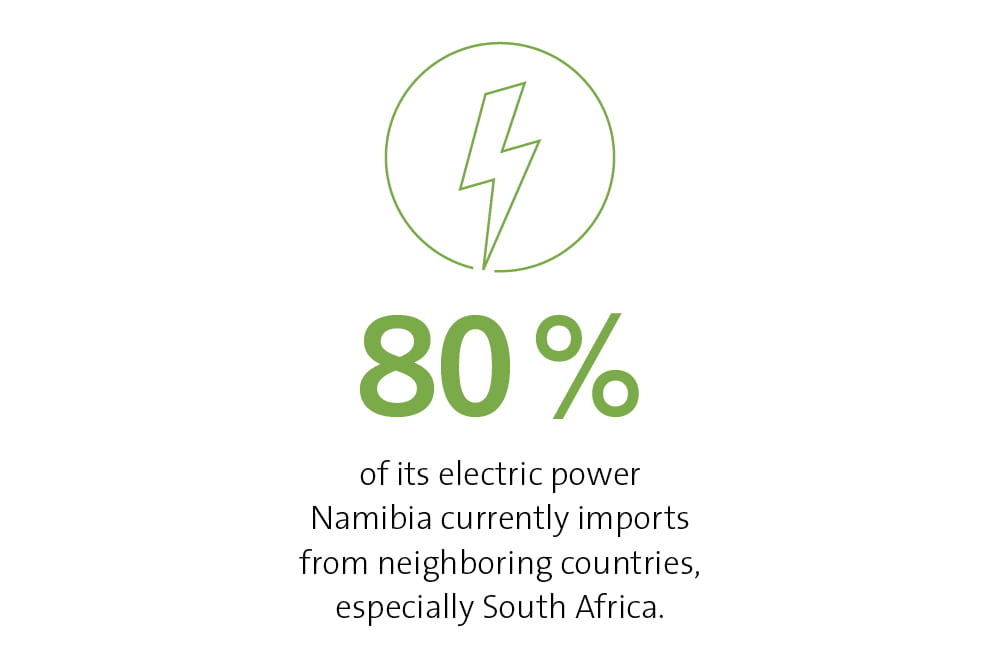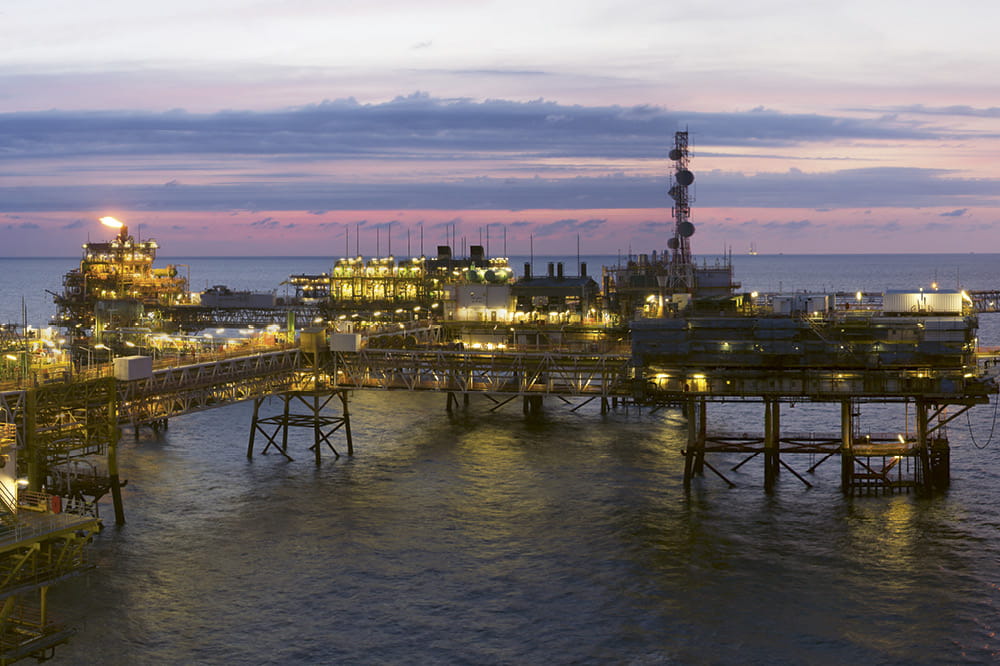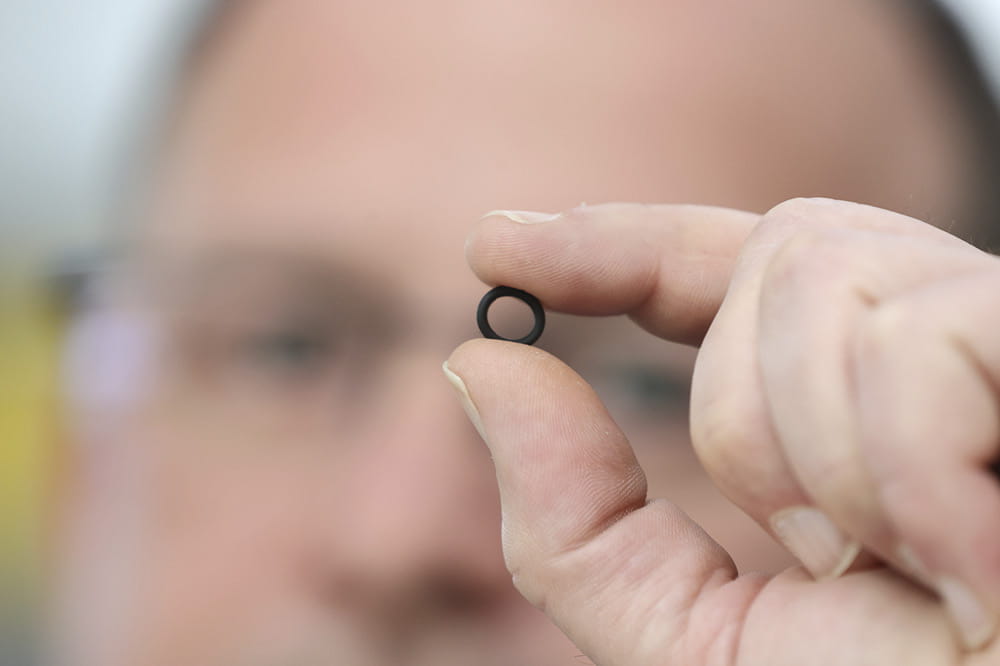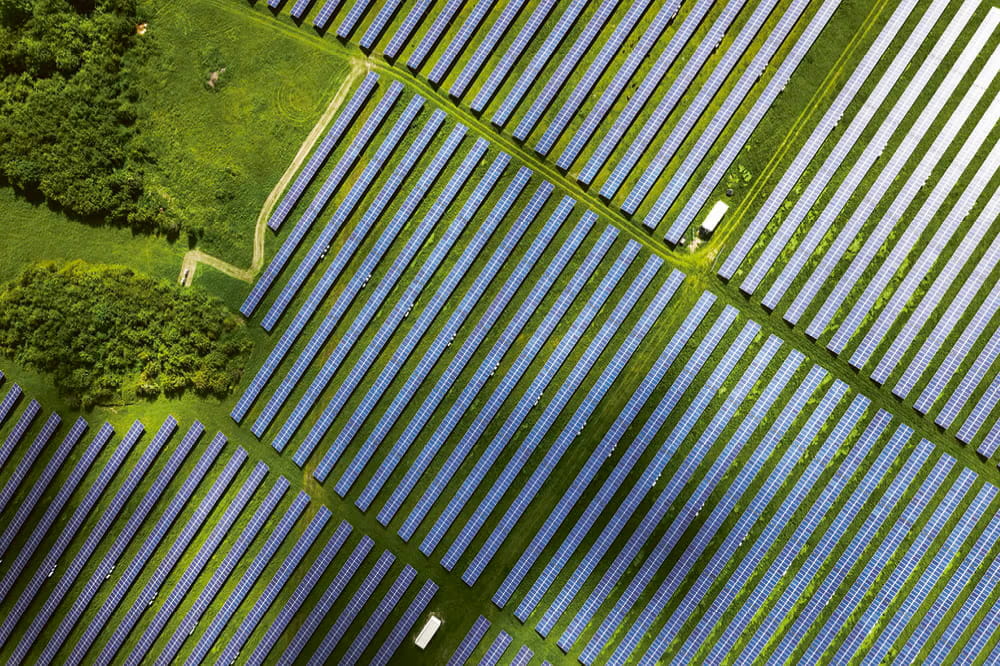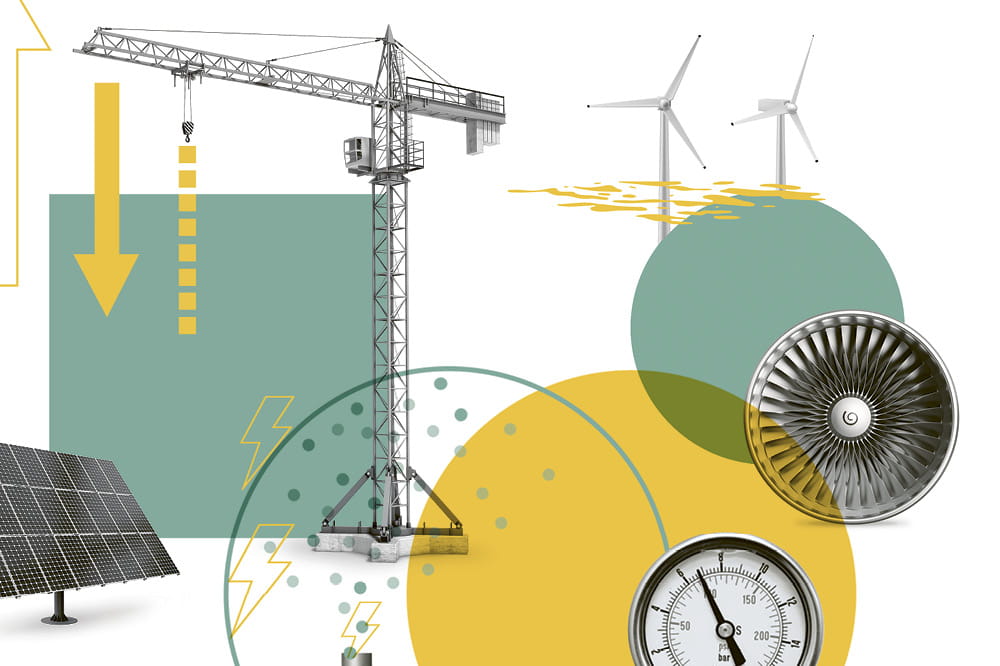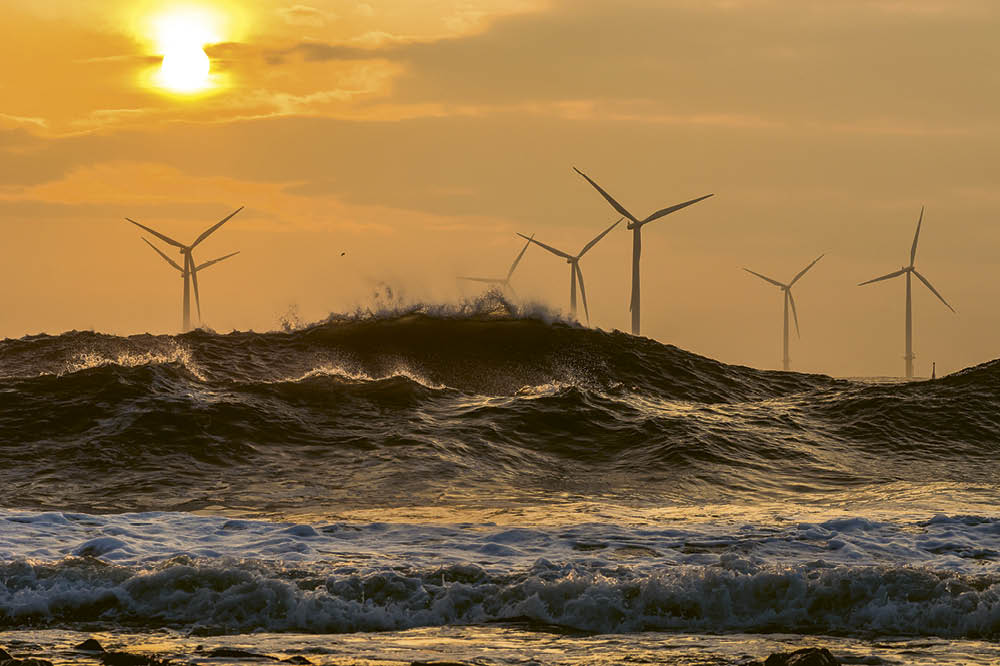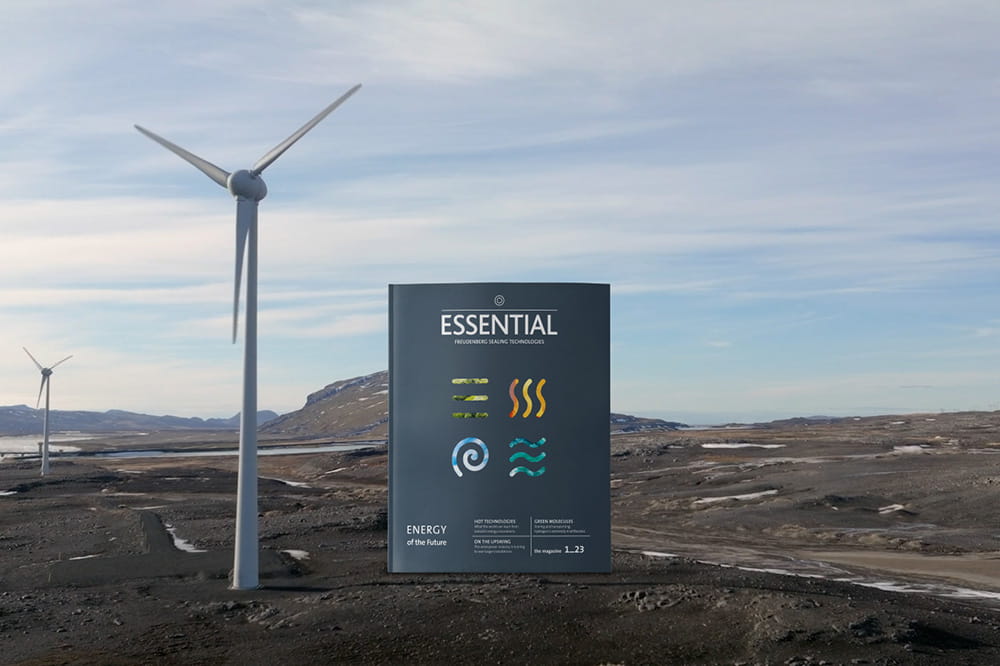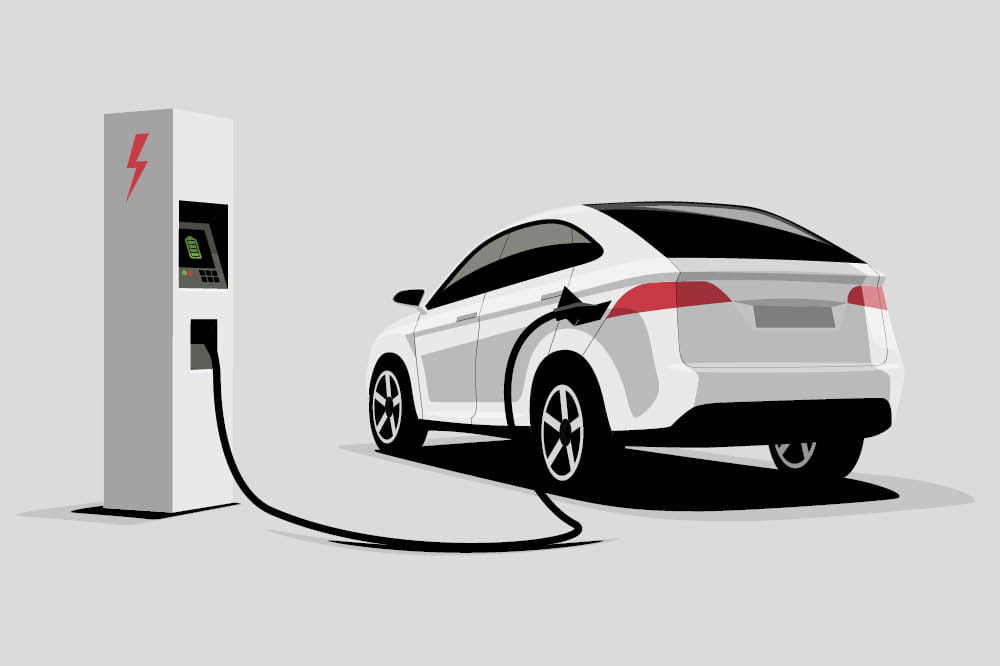Obtain news and background information about sealing technology, get in touch with innovative products – subscribe to the free e-mail newsletter.

Green Hydrogen from Namibia
Abundant sunlight and strong winds make the Namibian desert an ideal location for renewable energy. A small port city will be a base for global energy exports in the future.
So far, there are just three wind turbines operating near the Namibian port city of Lüderitz. And yet these three turbines – the only ones in all of Namibia – are just the start of a much larger project. By 2025, solar power plants and more wind turbines are expected to be generating electricity to produce green hydrogen. The location near this small city is ideal for the project. “The area is a huge desert, without a single tree dotting its expanse, but the wind is very strong,” says Sören Borghardt. He is an advisor to the longtime German State Secretary Rainer Baake, who has been named the Special Commissioner to the German-Namibian climate and energy cooperation by Federal Minister for Economic Affairs Robert Habeck. In this role, Borghardt recently visited the project site on the Namibian coast.
Sören Borghardt
Sören Borghardt works for the Climate Neutrality Foundation and is Senior Advisor to the Special Commissioner for the German-Namibian climate and energy cooperation. He spent his first workday in this capacity on site in Lüderitz, Namibia. He began focusing on climate and energy policy during his studies and later worked as an advisor to the energy partnerships of the German Federal Ministry for Economic Affairs with Japan and South Korea.
Ideal Conditions to Produce Green Hydrogen
Only a few locations on the planet rival this region of Namibia for the production of green energy. “A combination of strong winds and abundant solar radiation prevail there,” Borghardt explains.
- Solar Energy: up to 2,700 full load hours. – Comparison: facilities in Germany achieve about 900 full load hours. The figure for California can be as high as 1,500.
- Wind Energy: about 4,400 full load hours per wind turbin. – Comparison: wind turbins in the North Sea usually come in at 3,500 full load hours.
Lüderitz: There still isn’t much evidence of the new hydrogen project in Lüderitz, Namibia. © iStock/fivepointsix
Yet the project at Lüderitz is not just about wind and solar energy. The renewable energy generated there will be used to produce green hydrogen. Hydrogen is a key factor in the energy transition: It is a multifaceted element and can be used as a fuel and as an energy storage medium. When it is combusted, it gives off water vapor but no harmful emissions. The water vapor goes back into the water cycle. But hydrogen today is primarily “gray,” meaning that it is generated with the help of fossil fuels. It is only called “green” if it is produced with renewable energy. That makes it a zero-emission fuel, though it takes hydrogen production plants to do that. Those are being built in Lüderitz as well. Desalinated seawater is conducted into an electrolytic cell and is split into its components, hydrogen and oxygen, at the cell’s anode. Hydrogen ions are then combined with negatively charged electrons at the cathode, creating hydrogen molecules.
Conversion into Green Ammonia
The Namibian government has recognized the potential of green hydrogen. “Namibia is struggling with high youth unemployment,” Borghardt explains. But the energy sector offers a tremendous opportunity to create jobs. When Namibian President Hage Geingob asked his economic advisors to work out a plan for the country’s future, it was clear that it had superb conditions for the development of renewable energy and could capitalize on the demand that has been rising for the green molecules, especially in Europe. Aside from hydrogen, European industry and agriculture urgently need green ammonia. It is also being produced from natural gas. But the addition of nitrogen under high pressure and temperatures can turn green hydrogen into green ammonia.
Green ammonia is expected to be exported from Namibia starting in 2027.
Sören Borghardt, Climate Neutrality Foundation
This conversion is helping the project’s managers in Lüderitz solve yet another problem: transportation. “Hydrogen can be transported without difficulty via pipeline or tanks over relatively short distances,” Borghardt explains. “But if you want to transport it over longer distances, by ship, for example, you have to convert it.” In Lüderitz, the harbor area is being redesigned for this activity. Shipments of green ammonia from the port are expected to begin in 2027. Namibia is initially turning to petroleum-fueled tankers or container ships for transport. “There aren’t any other fuels for this yet,” says Borghardt. Coincidentally, it turns out that ammonia could be an alternative fuel for freighters long-term. “The project itself could be part of the solution.”
Renewable Energy for the Region
Green ammonia was the original focus of the project announced by the Namibian government. But now the country has identified other benefits, including the production of electric power. “Namibia now imports about 80 percent of the electric power it needs from neighboring countries and is heavily dependent on exports from South Africa,” notes Borghardt. But he adds that the neighbor is not a reliable source since it has its own serious problems in the sector. Its grid is often overloaded, and the power is switched off at times. “That means Namibia is dependent on a country that actually needs the power for itself.”
The government intends to change that by exploiting its outstanding conditions to produce green electricity. Renewable energy, as far as possible from its own production, is expected to flow through Namibia’s power grid by the end of the decade. Some will come from Lüderitz, even if it has mainly been conceived as a source of hydrogen and ammonia. “Due to the fluctuations in the amount of electricity generated with wind and solar power, there will be surplus power time and time again. After it is adapted, it can easily be used for the grid,” Borghardt emphasizes.

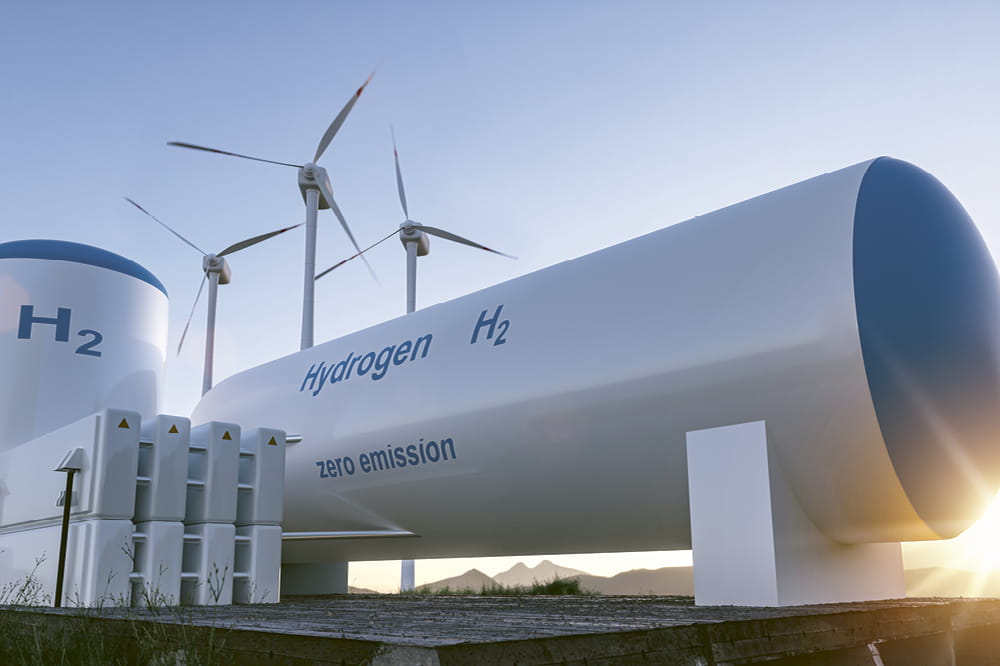
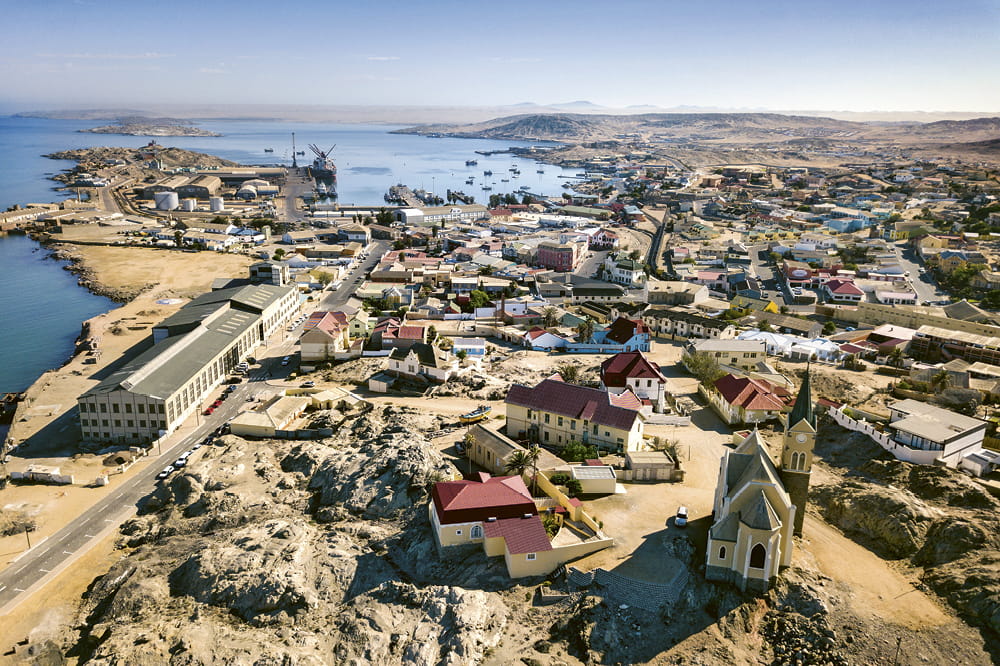
New Industrial Center for Green Hydrogen
There is something besides electricity needed for hydrogen production: fresh water. It is in short supply in Namibia – especially in the desert. But the Lüderitz area has the right conditions for freshwater as well. The project site borders the South Atlantic. “A desalinization plant is being built to treat seawater and supply fresh water for the production of hydrogen,” Borghardt explains. It will run on renewable electricity. The desalinated water will then be conducted by pipeline to the project site in the desert. The facility will also supply the city of Lüderitz with fresh water.
Electricity, sunlight, proximity to the ocean: Each of these elements favors the location. The project could soon turn this small Namibian port city into an industrial center with a passion for green molecules. “During its call for proposals, the government insisted that at least 90 percent of the employees be Namibian,” Borghardt says. Employment and a secure supply of water and electricity would make the area especially attractive to jobseekers. The number of wind turbines is expected to rise from three to 600 or 700 over the next few years, and they will be joined by two large solar projects. That is one of the location’s other advantages: “There is an extraordinary amount of space,” he adds. Even more than is needed for construction. The project site covers 5,000 square kilometers (nearly 2,000 square miles) from which green ammonia is soon expected to be shipped around the world.
This article originally appeared in ESSENTIAL, Freudenberg Sealing Technologies’ corporate magazine that covers trends, industries and new ideas. To read more stories like this, click here.
More Stories About Renewable Energy



